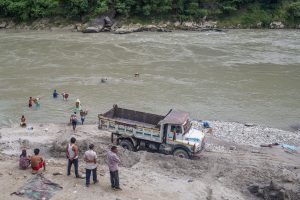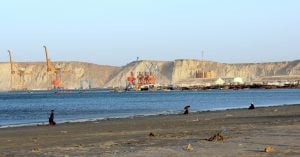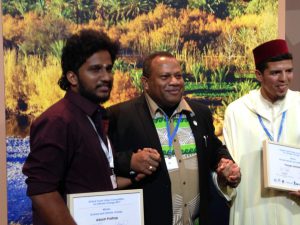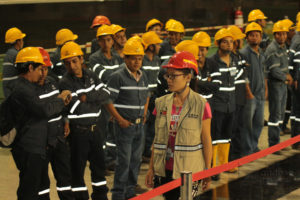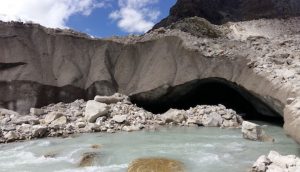With rising global temperatures and a growing hunger for resources, the world has been directing increasing attention to the north – to the Arctic. What has until recently often been considered a peripheral region is today recognised as central to issues affecting all of us. Changing ecosystems, and altered patterns of both oceanic and weather circulations may spell dire consequences for the planet and its population as a whole.
It was likely this recognition that brought Singapore’s Minister Sam Tan all the way to Tromsø in Arctic Norway earlier this year. Standing on the stage of the annual Arctic Frontiers conference he reminded the audience that what happens in the Arctic does not stay there. Singapore’s interest in the region is not about opportunism, he said; it’s about survival.
Singapore, as well as, e.g. China, India, the UK, Germany, and Japan, are among the reasonably new and, to some, surprising observers to the intergovernmental Arctic Council. More and more actors are showing interest in the Council that brings together the eight Arctic states for cooperation and negotiation. These eight are Norway, Sweden, Finland, Iceland, Denmark/Greenland, Canada, the US, and Russia. As the countries with territories north of the Arctic Circle, they are the Council’s only full members, and the only to hold voting and veto rights. The region’s Indigenous peoples are represented by six participating organisations, who are consulted on decision-making.
“What happens in the Arctic does not stay there” Sam Tan, Minister of State and Minister of Manpower, Singapore.”

[image by: Pernille Ingebrigtsen, Arctic Frontiers]
The Arctic Frontiers conference has run annually for more than a decade, and is an example of the ever-increasing importance of multi-stakeholder forums relating to the region’s affairs. When the conference series started in 2007, it was a collaborative initiative between business, policy, and science communities based in Tromsø, Norway. In the ten years that have followed, it has grown exponentially, with visitors coming together from a wide range of sectors, backgrounds, and countries. Today, it still rests on the three main pillars of business, science, and policy, but with highly diverse and international participation.
In particular, it is worth mentioning a shift in Arctic discourse – from a strong focus on development, e.g. resource extraction, to a far wider spectrum of interests and broader inclusivity. Not least, this has meant that where industrial heavy-weights could have dominated Arctic discussions, more and more efforts are made for local voices to be heard. This is in part a response to criticism raised in the past; and in part, a recognition that delegates do not travel across half the world to listen to the same high-level political leaders or business CEOs speak on a different stage. What brings people to the far north of Norway in the midst of the Polar Night darkness is the chance to engage in discussions in the Arctic with those from the Arctic too.
“Where industrial heavy-weights could have dominated Arctic discussions, more and more efforts are made for local voices to be heard.”
In the same room as prime ministers and ministers of foreign affairs, the local upper secondary-school student Anna Bjørn from Tromsø, thanked the audience for seeing “our Arctic”. However, her voice and call for action reached far beyond the walls of the conference venue. Via social media and news reports, the young voice from the Arctic was heard by a global community that wants to listen, to learn, and to engage. In this manner, the example of Arctic Frontiers illustrates wider trends: that the Arctic region is all at once both truly local and truly global.

No challenge in the Arctic can be tackled without a holistic approach that takes into consideration the dynamic relations both among people and ecosystems – neither of which are confined to invisible latitudinal boundaries. As the British scholars Duncan Depledge and Klaus Dodds have pointed out, Arctic governance arrangements may be compared to a “bazaar”, “blurring the lines” between e.g. business, governance, science, and society. That does not spell chaotic competition for the upper hand, but rather spaces that are open to many views and interests.
On the one hand, Arctic relations may be unique in the ways in which they stretch beyond high-level diplomacy to involve local schools, peoples, and culture. On the other hand, there is no reason why the circumpolar north should be unique in this sense. Arguably all discussions on environments and their resources ought to include the voices of those there, as well as those affected by it elsewhere.
“Arctic relations may be unique in the ways in which it stretches beyond high-level diplomacy to involve local schools, peoples, and culture.”
No less in the Arctic than elsewhere in the world, identities are made in and through connections with others. Via the internet, travel, media, and indeed such events, awareness of the Arctic does not just grow among those far from it; also those in the Arctic find their own role in these relationships.
For those arriving in Tromsø, perhaps with a few nights there, the question is often how they may contribute to the rapidly changing region – with expertise, research, know-how, or investment. And for those staying there for the remainder of the year, this annual influx of people – and with it, the celebration and promotion of anything ‘Arctic’ – is, and should be, a celebration of life and culture in the north.
Like anywhere, these are lives and cultures that are proud and unique, while simultaneously thriving in interaction with those elsewhere. It is at this crossroads, in the many conversations in conference rooms, hallways, and lunch-breaks, that the future of the region takes shape.
Ole Øvretveit is Director of the Arctic Frontiers Secretariat in Tromsø, Norway. Ingrid A. Medby is a Lecturer in Political Geography at Oxford Brookes University, UK, researching Arctic identities and politics. Together they have co-authored a chapter on the role of Arctic conferences, to be published in the edited book “The Role of Regional Governments in International Affairs: Lessons from the Arctic” (eds. Axworthy, T.A. Tsui, E. and French, S.) in 2018.
Arctic Frontiers is an annual conference in Tromsø, Norway; it will take place 21-26 January in 2018. Additionally, it has a range of affiliated side-events and seminars that run throughout the year across the world.
![<p>Sam Tan, Minister of State and Minister of Manpower, Singapore at Arctic Frontiers [image by: Pernille Ingebrigtsen, Arctic Frontiers]</p>](https://dialogue.earth/content/uploads/2017/12/AF1-300x200.jpg)

